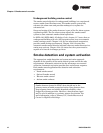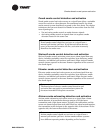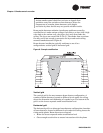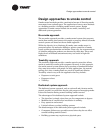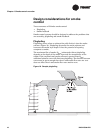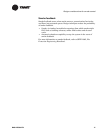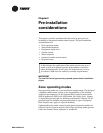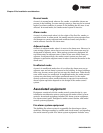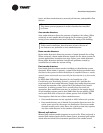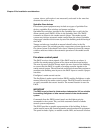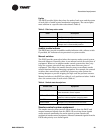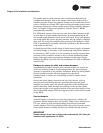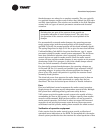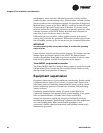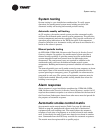
Chapter 2 Pre-installation considerations
20 BAS-APG001-EN
Normal mode
A zone is in normal mode when no fire, smoke, or sprinkler alarms are
present in the building. In some zoning systems, a zone may be in normal
mode if an alarm condition is present in the building but the zone is not
affected. In normal mode, the smoke control system is inactive.
Alarm mode
A zone is in alarm mode when it is the origin of the first fire, smoke, or
sprinkler alarm. In alarm mode, the smoke control system operates fans
and dampers to protect adjacent and unaffected zones and provide a
smoke exhaust route for the alarm zone.
Adjacent mode
A zone is in adjacent mode when it is next to the alarm zone. However, in
some zoning systems, zones that are not next to the alarm zone may be
designated as adjacent zones. Other zoning systems may designate all
non-alarm zones as adjacent zones. Codes do not state which zones are
adjacent. In adjacent mode, the smoke control system sets fans and
dampers to pressurize adjacent zones in order to contain the smoke in the
alarm zone.
Unaffected mode
A zone is in unaffected mode when it is neither the alarm zone nor an
adjacent zone and an alarm is present in the building. In large buildings,
there may be many zones that are not near the alarm zone. Codes do not
state which zones are unaffected. In unaffected mode, the smoke control
system may shut down and isolate unaffected zones. Or, the smoke
control system may allow unaffected zones to operate in normal mode.
Actual system operation depends on the design of the smoke control
system.
Associated equipment
Equipment associated with the smoke control system design is a pre-
installation consideration prior to setting up the smoke control system
controls. Associated equipment includes: fire alarm system equipment,
fire alarm control panel, firefighter’s smoke control station, and smoke
control system equipment.
Fire alarm system equipment
The building fire alarm system is responsible for detecting an alarm
condition, alerting occupants by audible and visual means, and signaling
the smoke control system. Fire alarm system equipment includes: area,



